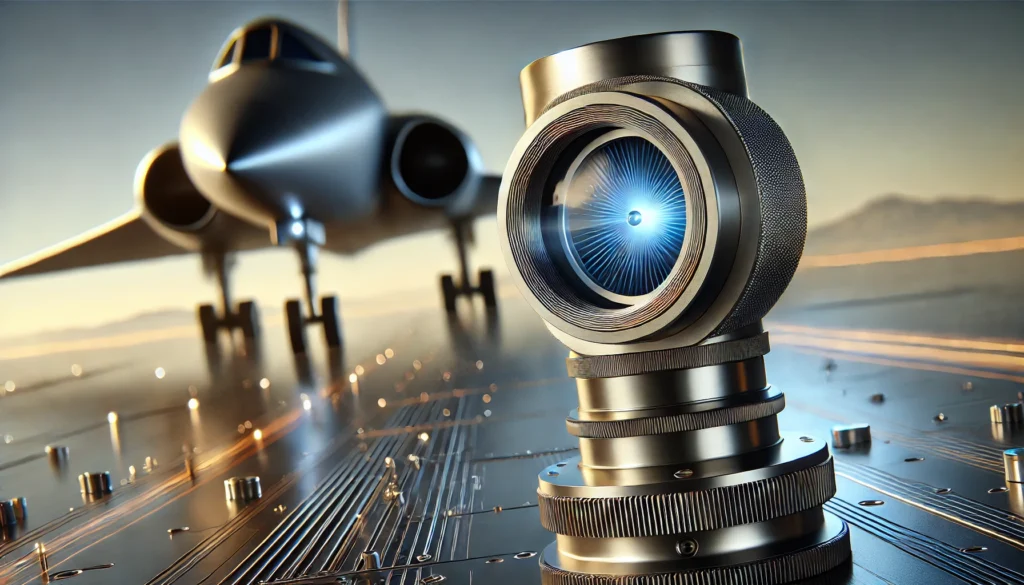
Hypersonic aircraft represent the pinnacle of aerospace innovation, where speed exceeds Mach 5, propelling aviation into the future. Recent breakthroughs in controlling these aircraft using light-based technology are paving the way for safer and more efficient travel at unprecedented speeds. Optical sensor technology is becoming an integral part of hypersonic aircraft, providing crucial data for flight control and ensuring passenger safety.
Understanding Hypersonic Aircraft
Hypersonic aircraft operate at speeds that traditional sensors, which rely on mechanical readings, struggle to monitor effectively. The latest advancements, however, leverage optical sensors, providing real-time data at the speed of light, a crucial factor in managing the extreme conditions of hypersonic flight. These types of sensors can also withstand the harsh environment, making them ideal for use in hypersonic aircraft.
Breakthrough in Engine Control
Scientists at the University of Virginia, funded by NASA, have successfully demonstrated how optical sensors can control the airflow within supersonic combusting jet engines—commonly known as scramjets. This technology allows for adaptive control of the engine, responding to dynamic changes instantly, thus preventing engine failure and enhancing overall performance.
The use of optical sensors in hypersonic aircraft offers a significant advantage. By monitoring the light emitted by reacting gases within the engine, these sensors provide a more detailed analysis of the engine’s internal conditions. This method is not only faster but also more accurate than previous techniques, which relied solely on pressure sensors at the engine’s walls.
NASA-Funded Research
NASA’s hypersonic jet plane, the Hyper-X, made history in 2004 by flying faster than any other aircraft. The final X-43A unmanned prototype set this remarkable record during a test in November 2004, achieving an astonishing speed of Mach 10—ten times the speed of sound. Previously, such velocities had only been reached by rockets.
This groundbreaking achievement marked a significant advancement in jet technology, facilitating the transition from ramjets to more efficient scramjets. While the hypersonic proof of concept was successful, the primary challenge lay in achieving effective engine control, as the technology relied on outdated sensor methods.
However, a recent breakthrough by the University of Virginia offers renewed hope for the future of the X-plane series, which aims to travel at hypersonic speeds.
From Ramjets to Scramjets
The evolution from ramjets, which operate efficiently at lower hypersonic speeds, to scramjets, which handle higher speeds, marks a significant advancement in jet technology. The dual-mode scramjet, tested in the recent studies, showcases this progression, beginning in ramjet mode and transitioning to scramjet mode as it exceeds Mach 5.
The integration of optical sensors in hypersonic aircraft could revolutionise how we approach space travel. Envisioned future projects, like single-stage-to-orbit aircraft, benefit from these advancements, combining the convenience of traditional aircraft with the capability of space shuttles.
Related: Achieving Hypersonic Flight Is Closer Than We Think
Optical Sensors: A Game-Changer for Hypersonic Flight
In comparison to traditional sensors that rely on physical contact with the measuring subject, optical sensors operate using non-contact methods. They capture data using light-based technology without requiring direct access to the measured entity, making them highly versatile and more efficient. This feature is particularly useful for hypersonic aircraft, as it eliminates potential interference with sensitive mechanical components.
Applications of Optical Sensors in Hypersonic Aircraft
Structural Monitoring
One crucial application of optical sensors in hypersonic aircraft is structural monitoring. The extreme speeds and temperatures experienced during hypersonic flight can cause significant structural strain, which requires real-time monitoring to ensure the aircraft’s safety and integrity. Optical sensors provide precise measurements of structural changes, allowing for early detection of potential issues.
Temperature Monitoring
Hypersonic flight generates intense heat, reaching temperatures up to 3,500°C. Traditional sensors are unable to withstand these extreme conditions, making them unreliable for temperature monitoring. Optical sensors, on the other hand, are designed to withstand high temperatures and accurately measure thermal variations.
Aerodynamic Testing
The shape and design of hypersonic aircraft play a crucial role in their performance. With optical sensors, engineers can gather critical data on air pressure distribution and flow patterns around the aircraft during test flights, allowing for improved design and efficiency.
Flight Control
The fast-paced nature of hypersonic flight requires immediate and precise data for proper flight control. Optical sensors provide real-time measurements of various parameters such as speed, altitude, and orientation, enabling pilots to make necessary adjustments quickly.

Future Possibilities for Hypersonic Aircraft
The integration of optical sensor technology in hypersonic aircraft has paved the way for even more advanced applications in the future. With ongoing research and development, these sensors could potentially be used to optimise fuel consumption, detect potential hazards or failures, and enhance passenger experience through intelligent cabin monitoring systems.
Final Thoughts: Advanced Sensors for Hypersonic Aircraft
Traditional sensors are not capable of operating at high speeds due to their reliance on mechanical components. In contrast, optical sensors use light to capture images and measure various parameters such as temperature, pressure, and velocity with minimal interference. This makes them ideal for integration into hypersonic aircraft where accuracy and reliability are paramount. These sensors are also smaller in size and have lower power requirements, making them perfect for use in compact spaces within hypersonic aircraft.
As hypersonic technology continues to evolve, the implications for both military and commercial aerospace are vast. The shift towards optical sensors and light-based technology not only enhances the performance of hypersonic aircraft but also ensures a safer and more reliable approach to reaching the edge of space and beyond.
Read our blog and follow us on social media for more fascinating updates in the world of engineering, manufacturing, technology and science.


 Mail:
Mail: 



